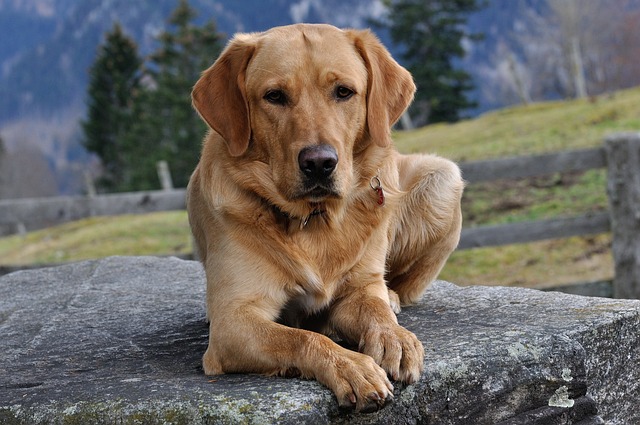
How can I tell if my dog's heatstroke is serious
Let’s be real: It’s a sticky August morning in Los Angeles, and you took your 2-year-old Golden Retriever, Max, for a walk a little later than usual
You’re out for a morning walk, and your pup suddenly stops, lifting a paw like it hurts. When you kneel to check, you notice their paw pads—usually tough and rubbery—are dry, cracked, and flaking. It’s a common moment for new dog owners: “Do dogs really need their paws moisturized? Aren’t they supposed to be tough?” The answer is yes, sometimes—those pads work hard, and even the toughest can use a little help, depending on the season, their environment, and their breed. Let’s break down when, why, and how to keep those paws healthy.
First, let’s talk about what makes paw pads special. A dog’s paw pads are made of thick, fatty tissue covered in a tough outer layer—nature’s way of protecting them from hot pavement, cold snow, and rough terrain. But that outer layer can dry out. In winter, salt on sidewalks (used to melt ice) strips moisture from pads, leaving them cracked. In summer, hot asphalt (which can reach 140°F in the sun!) burns and dries them. Even in mild weather, apartment dogs who walk mostly on hard floors (instead of grass) can develop dryness from constant friction. My neighbor in Minnesota learned this the hard way: her Lab’s paws cracked so badly in January, he limped—turns out the sidewalk salt was the culprit. Pads aren’t just for walking; they help with balance and shock absorption, so keeping them healthy keeps your dog moving comfortably.
So, when is moisturizing necessary? Look for signs: cracked or peeling pads, redness, or your dog licking/chewing their paws more than usual. Breeds with sensitive pads (like Greyhounds, who have thin skin) or those with lots of outdoor time (hunting dogs, agility pups) need it more often. For most dogs, though, it’s seasonal: winter (to fight salt and cold) and summer (to repair sun damage). Avoid over-moisturizing—too much can make pads soft and prone to tearing. Think of it like lotion for your hands: a little when dry, not a lot every day.

What to use? Stick to paw balms or creams made for dogs—human lotions often have fragrances or chemicals (like xylitol) that are toxic if licked. Brands like Musher’s Secret (a wax-based balm) or Burt’s Bees Paw & Nose Lotion work great. My cousin’s Dachshund, who hates rainy walks, gets a thin layer before going out—now his pads stay soft, not soggy. To apply: rub a tiny amount between your hands to warm it, then gently massage it into each pad. Reward with a treat afterward—positive reinforcement makes them associate paw time with good things, instead of pulling away. Never hold their paw tightly or scold if they squirm—patience works better, and stress can make them fear the process.
For apartment dwellers, wipe paws with a damp cloth after walks—this removes salt, dirt, or chemicals that cause dryness. Avoid using harsh floor cleaners; residue can irritate pads. When walking, follow community rules: in many cities, it’s illegal to let your dog walk off-leash in parks (unless designated), and always carry poop bags (fines in Philly hit $300 for forgetting). In summer, test pavement with your hand—if it’s too hot for you, it’s too hot for them. In winter, use pet-safe ice melt instead of salt on your own driveway.
And remember, paw health ties into overall care. While at the vet for their rabies vaccine (required by law in all 50 states), ask them to check pads—they can spot issues you might miss.
Moisturizing dog paws isn’t always a must, but when they need it, a little balm goes a long way. Happy paws mean happy walks—and that’s something every dog (and owner) can get excited about.

Let’s be real: It’s a sticky August morning in Los Angeles, and you took your 2-year-old Golden Retriever, Max, for a walk a little later than usual

You're enjoying a summer afternoon at the park when you notice your dog has stopped panting and appears disoriented - their gums are bright red

Let’s paint the picture: You’re in your Denver apartment, watching your 4-year-old Boston Terrier, Ruby, plop down mid-play session with her favorite toy

Many dog owners notice their pets nails seem shorter after regular walks,but how much does this daily activity actually help?The answer depends on where you walk—concrete sidewalks or asphalt streets gently file nails as a dog's paws hit the ground

Most dog owners notice their pup scooting across the carpet at some point, but few connect it to impacted anal glands. These small sacs near a dog’s rectum secrete a scent for marking territory

Most vets agree that regular dog teeth cleaning is key to avoiding painful dental issues later. For healthy adult dogs, a professional cleaning at the vet’s office every 12 to 18 months usually works well.